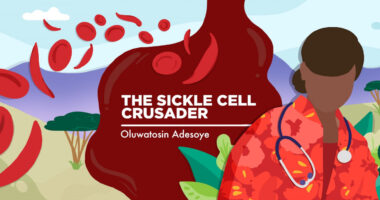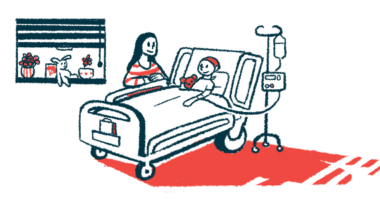Self-managing SCD differs between adults, children: Ghana study
Researchers interviewed 10 adults with SCD, 9 caregivers

People in Ghana with sickle cell disease (SCD) use prevention, monitoring, diagnosis, and treatment to self-manage their condition, but how this is done differs between adults and children, a study finds.
People with SCD spoke more about doing things to stay healthy and treat problems that come up, rather than constantly keeping track of their health, the researchers noted.
“Actions that involve consistent monitoring and observation of health problems were limited,” the researchers wrote, adding that “tailored self-management services may be helpful for adults and children.” The study, “Self-management for sickle cell disease among patients and parents: A qualitative study,” was published in Chronic Illness.
SCD symptoms are caused by unusually shaped red blood cells that don’t live as long as healthy cells, resulting in anemia, and are too rigid to move easily through blood vessels.
When blood vessels become blocked, patients may have episodes of acute pain known as vaso-occlusive crises, which can be severe and last for days or even weeks.
The disease usually requires lifelong treatment, but the level of support can vary. Some may require regular medical monitoring, while others may be able to manage their condition with less intervention.
People with SCD should work with their doctors to create a care plan that meets their unique needs. They must also look after their health using self-management practices.
To better understand what self-management consists of with SCD in Ghana, researchers interviewed 10 adults (ages, 21-65) and nine mothers or other guardians, including a grandmother and an aunt, who took care of children with SCD (ages, 3-15).
Management of SCD between adults, children
People with SCD practiced self-management in four ways: prevention, monitoring, diagnosis, and treatment, the researchers found.
To stay healthy and prevent a crisis, they drank a lot of water and other fluids to stay hydrated. They also consumed nutritious foods to help boost hematopoiesis, the process by which new blood cells form, while avoiding oils and other fats.
“I make sure he eats an egg every three days. I also make sure he eats more vegetables; drinks a lot of soup and eats liver. When he was a child, I used to mix most of his food with soya beans. This has been very helpful,” one mother said.
Both children and adults with SCD made sure to stay warm, avoid certain activities, and to take their prescribed and over-the-counter medications. Many took folic acid to boost hematopoiesis.
To monitor and diagnose their illness, parents and guardians paid attention to changes in the color of children’s urine or their eyes. For some, red eyes indicated a vaso-occlusive crisis, yellow eyes indicated malaria, a parasite-caused disease), and brown urine indicated dehydration.
Episodes of pain were common, and “parents usually diagnosed pain among their younger children who cannot verbalize pain through palpation of the body to locate the painful area,” the researchers wrote.
Other less-common symptoms in children were prolonged crying, itchy eyes, stomach pain, constipation, severe weakness, and difficulty walking.
Adults didn’t regularly monitor their urine or eyes. Instead, they paid more attention to subjective indicators, such as feeling unwell or excessively tired, continuous yawning, and an urge to stretch. They considered these as symptoms, along with bitterness in the mouth, a rapid heartbeat, difficulty walking, and eye pain.
I make sure he eats an egg every three days. I also make sure he eats more vegetables; drinks a lot of soup and eats liver. When he was a child, I used to mix most of his food with soya beans. This has been very helpful.
Three men experienced priapism, a prolonged penile erection that occurs without sexual stimulation.
“Priapism, it is now my major problem. I suffer when it starts,” one man said.
All three men managed priapism by drinking more fluids, taking a short walk, or riding a bicycle.
Many adults and some parents or guardians used traditional medicines, including herbs, to ease nonspecific symptoms. Most didn’t consider these to be useful, however.
To treat pain episodes, many took multivitamin supplements and painkillers, such as paracetamol or ibuprofen. Nonpharmacological options included applying heat and increasing fluids. Fever was treated with paracetamol or a tepid sponge.
“In general, adults and parents identified similar areas of self-management, but the mode of application differed in some areas between the two,” the researchers wrote. “Tailored [self-management] services are required for adults and children.”







